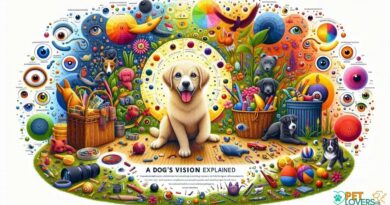What is gestures of affection
What is Gestures of Affection?
Gestures of affection are the subtle and overt ways in which dogs express their love and attachment to their human companions. Understanding these gestures is crucial for building a strong bond with your canine friend. Dogs communicate primarily through body language, and recognizing these signs can enhance your relationship and ensure your pet feels secure and loved.
Body Language: The Canine Love Language
One of the most significant gestures of affection in dogs is their body language. A relaxed body posture, wagging tail, and soft eyes indicate a happy and affectionate dog. When a dog approaches you with a wagging tail held high, it is often a sign of excitement and affection. Conversely, a low tail position may indicate submission or fear, highlighting the importance of context in interpreting these gestures.
The Power of Eye Contact
Eye contact is another powerful gesture of affection among dogs. When a dog looks into your eyes, it releases oxytocin, the same hormone that helps bond mothers and infants. This mutual gaze fosters a deeper connection and signifies trust and love. However, it’s essential to approach eye contact gently, as some dogs may perceive direct staring as a threat.
Physical Touch: The Ultimate Sign of Affection
Physical touch is a primary way dogs show their affection. Whether it’s leaning against you, nudging your hand, or cuddling up beside you, these behaviors indicate a desire for closeness and connection. Dogs often seek physical contact to feel secure and loved, making it vital for owners to reciprocate these gestures with gentle petting and affection.
Playfulness: A Joyful Gesture of Affection
Playfulness is an essential gesture of affection in dogs. When your dog brings you a toy or playfully bows with their front legs stretched out, they are inviting you to engage in a fun activity. This playful behavior not only strengthens your bond but also allows your dog to express their happiness and affection towards you.
Vocalizations: Barking with Love
Vocalizations, such as soft barks, whines, or even howls, can also be gestures of affection. Each sound has its meaning, and a happy bark often signifies excitement and joy when greeting you. Understanding your dog’s vocalizations can help you interpret their feelings and respond appropriately, reinforcing your bond.
Following You Around: A Loyal Gesture
When a dog follows you from room to room, it is a clear gesture of affection and loyalty. This behavior indicates that your dog wants to be near you and feels secure in your presence. Dogs are pack animals, and their instinct to stay close to their pack leader is a testament to their love and attachment.
Bringing You Gifts: A Unique Gesture of Affection
Dogs often express their affection by bringing you ‘gifts,’ whether it’s a favorite toy, a stick, or even something they found outside. This behavior is rooted in their instinct to share and bond with their pack. Accepting these gifts with enthusiasm reinforces your dog’s affectionate gesture and encourages them to continue this behavior.
Yawning and Stretching: Signs of Comfort
Yawning and stretching in dogs can also be gestures of affection. When your dog yawns or stretches while lying next to you, it signifies relaxation and comfort in your presence. These behaviors indicate that your dog feels safe and at ease, which is a fundamental aspect of their affection towards you.
Conclusion: Embracing Canine Affection
Recognizing and understanding the gestures of affection in dogs is vital for nurturing a loving relationship. By paying attention to their body language, vocalizations, and playful behaviors, you can create a deeper bond with your furry friend. Embrace these gestures, and your dog will thrive in an environment filled with love and understanding.



